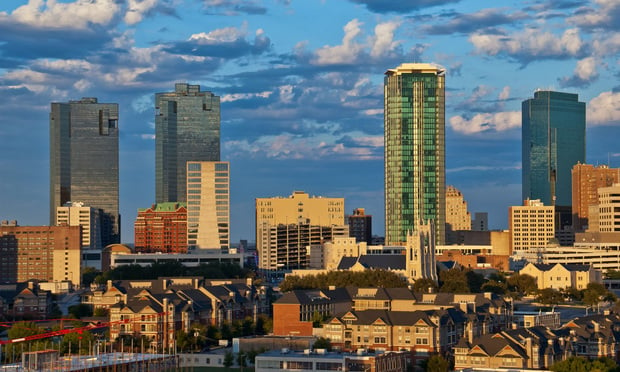[IMGCAP(1)]
SAN DIEGO—“Context: What's the Big IDEA” is San Diego Architectural Foundation's outreach program that will share and gather information on how San Diego's Upper East Village should evolve, spokesperson Margit Whitlock, principal of Architectural Concepts Inc., tells GlobeSt.com. The event, which takes place June 4 at SILO Downtown, will feature food and drink, followed by the premier of a short documentary by Breadtruck Films and SDAF that captures the spirit of Upper East Village today and highlights visions for the future that emerged from the community workshop that was held on May 2. A panel discussion will follow the film.
GlobeSt.com spoke exclusively with Whitlock about the purpose of the event and how she views this evolving Downtown San Diego neighborhood, which includes the I.D.E.A. District and Makers Quarter. For more information on Context, click here.
GlobeSt.com: Please explain what Context is and what it means to you.
Whitlock: SDAF has been looking for a program to promote its mission to broaden the greater public on the value of good environmental design in their life. It started with Context Volume 1, with the public library, and it was a huge success—a storytelling event about the 35 years of struggle it took to get a building built. There was a panel discussion and then talk about what's next for San Diego. Context is a program about what's next; it's a thought process. We choose an interesting issue, idea or sore thumb and bring it to life.
Context Volume 2, is about the I.D.E.A. District. We decided that there seems to be some kind of disconnect between the public and the developers. The program is the catalyst to bring stakeholders together to talk about what we are doing and how we can work together to make sure everybody has a cohesive plan. There's so much going on in every little pocket.
Four years ago, a community workshop was held, and out of that came a vision statement for the I.D.E.A. District. It stuck for a while and included Makers Quarter. Pete Garcia and David Malmuth carried the torch and spoke to students, schools and business owners—more than 100 people—about nine topics of discussion, the key points of what's important and what the future looks like. This neighborhood is an important future development in San Diego right now, and we didn't want it to be a tumbleweed. We have to get in front of it or it will be a free-for-all. We shouldn't let the urban core of San Diego be developed haphazardly without a vision. Breadtruck Films filmed it, and they interviewed stakeholders about how the East Village died, how it was an empty parking lot.
[IMGCAP(2)]
Context, Volume 2, will bring in four panelists: Mary Walshok, UCSD associate vice chancellor of public programs and author of “Closing America's Job Gap, Invention & Reinvention—the Evolution of San Diego's Innovation Economy”; Gordon Carrier, architect and design principal of Carrier Johnson + CULTURE; Eleanor Pries, a design principal and partner at SITELAB Urban Studio in San Francisco; Jim Chappell, former president of San Francisco Planning and Urban Research; and our moderator, Tim Sullivan of Meyers Research and chairman of ULI's San Diego/Tijuana Chapter. We will look at the Upper East Village from an economic-development standpoint—the financing options, design and people buy-in—followed by a Q&A session.
The premise is to give a voice to the people, bring together community members, stakeholders and others into a powerful stance. What happens after that, we're not sure, but engagement is the goal—after that, they can continue the conversation themselves, even if we have to do an update in six months.
GlobeSt.com: How do you envision the Upper East Village changing and evolving over the next decade?
Whitlock: It's hard because we want it all: pedestrians, plaza, health, education. We want a healthy society where everybody and everything's together: the person, the artist, the professional, the educational. It has to be affordable, flexible, really visionary and scalable. It's going to grow and shrink. We don't want it to be so outclassed that it becomes only for the elite at some point. Urbanism needs to be paid attention to—the spaces between and in buildings. Materials need to be upscale and people need to put more money in it. There need to be water reclamation, solar power, safety measures. It should take a worldwide-city attitude and put itself on the map as a model: “Look what San Diego has done.” But the perception of density is really not there.
GlobeSt.com: How will this affect the rest of Downtown and the real estate industry in this submarket?
Whitlock: It's important to create linkages: streets, paths, an identity from village to village—from the East Village to the Gaslamp to Little Italy—walkable pedestrian linkages that moved from neighborhood to neighborhood would be great. I.D.E.A. District greatly supports all other Downtown communities. It's bringing life to the streets. The more people who have diversity, who live/work/play in the same city, the more it helps each other out economically. Real estate will populate organically; it will come from that mindset. People want to walk to work, socialize afterward, hit the gym and the park. The trolley infrastructure is there; the City needs to put some thought into this, too. It's a matter of long-term master planning; we need to tie a rope around our city.
© Touchpoint Markets, All Rights Reserved. Request academic re-use from www.copyright.com. All other uses, submit a request to [email protected]. For more inforrmation visit Asset & Logo Licensing.






